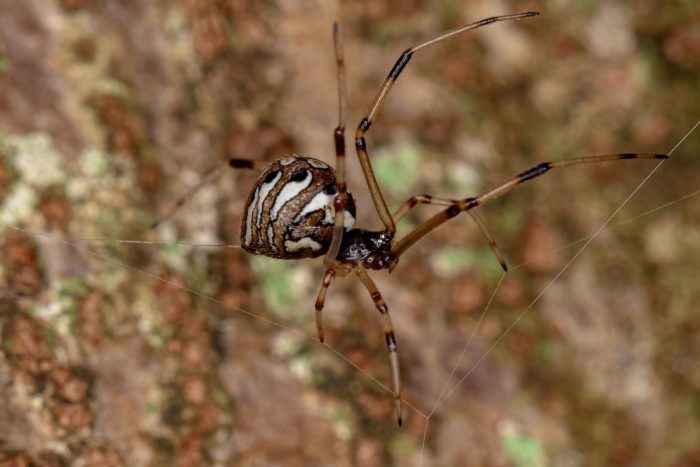You may have heard that black widow spiders are one of the most dangerous spiders.
Black widow spiders (Latrodectus) have a fearsome reputation, but in truth, they’re peaceful, lonely pacifists who only use their deadly bites when all other defenses have failed.
There are 32 species of the infamous arachnids on the planet, except for Antarctica, and the genus probably first appeared around 300 million years ago.
Male black widows do not carry as much venom as females. Even though it’s often assumed that all females consume their partners after mating, this is an uncommon occurrence that only occurs in lab settings where there’s no way out.
Species of Widow Spiders
The European black widow (Latrodectus tredecimguttatus), the Australian redback black widow (Latrodectus hasseltii), several Southern African species like Button spiders, and South American black widow spiders are some of the other species (Latrodectus corallinus and Latrodectus curacaviensis).

In the venom of these little spiders, the neurotoxin latrotoxin is detected, which causes the disease latrodectism. Female widow spiders have enormous venom glands, and their bites are particularly hazardous to large animals like humans. Humans are only harmed by the bites of females.
Quick Facts:
- The black widow spider is extremely dangerous.
- Latrodectus mactans is the scientific name for this species.
- 1 g is the average weight.
- Males’ average length is 3-4 mm, while females’ average length is 8-10 mm (females)
- Males have a lifespan of 1-2 months, while females have a lifespan of up to 3 years (females)
- The venom of the black widow spider is 15 times more deadly than that of a rattlesnake! However, the amount of venom injected by a spider in a single bite is rarely lethal to humans.
Facts About the Black Widow Spider!
- The webs of black widows are comparable to steel in terms of strength! Scientists are studying the spider’s weaving silks to replicate them for infrastructural projects such as bridges!
- Spiders in the genus Steatoda resemble widow spiders at first glance, earning them the moniker ‘false widow spiders’. Although Steatoda bites are unpleasant, they are not as harmful as black widow bites.
- The most dangerous of the 32 widow species is Latrodectus tredecimguttatus.
- Black widow spiders have a short lifespan. Males usually die within months, and only a few lucky females live to be three.
Appearance and Behavior of the Black Widow Spider
Black widow spiders are nearly all 1.5 inches long, weigh around 0.035 ounces, and have dark-colored hourglass-shaped bodies with white, brown, or red markings. Widow spiders, like most web-weaving spiders, have poor vision and rely on vibrations to detect prey and danger.
Unlike the world’s largest spider, the Goliath birdeater (Theraphosa blondi), black widows are tiny – around the size of a paperclip. But don’t be fooled by their small stature; widows carry dangerous loads!

Their bites release latrotoxin, a neurotoxin that can induce severe pain, muscle rigidity, vomiting, and intense perspiration. These symptoms might last up to a week after being bitten by a black widow spider. However, it is untrue that widow bites result in human deaths regularly. Cats and dogs, on the other hand, are killed by them.
Physiology
‘Comb-footed’ or ‘tangle-web’ spiders are other names for black widow spiders. The fingernail-sized black widow weaves irregular, funnel-shaped tangle webs and captures victims with its combed hind set of limbs, earning both names.
Spiders as juveniles are orange, brown, and white, but as they grow older and molt, they become their trademark charcoal hue. Adult females have a red hourglass mark on their abdomen, as well as one or two red spots over the spinnerets and down the center of their back.
Males are typically half the size of females, although they have longer legs. They have four pairs of red and white stripes on the sides of their abdomen, which are orange-brown in the center and black on the edges.
Mating
During mating season, the male stops eating and focuses all of his attention on seeking a partner. When a male finds a female, he vibrates the threads of her web to ensure that she is a female of the same species and to warn her of his presence.

A female deposits 50-100 eggs on a little web, which she then protects with silk. After that, the female guards the egg sac for around 30 days, until the spiderlings hatch.
Distribution
Southern (Latrodectus mactans), western (Latrodectus hesperus), and northern (Latrodectus variolus) black widow spiders can be found in the United States, as well as parts of southern Canada – particularly in the Okanagan Valley of British Columbia – as can the ‘gray’ or ‘brown widow spiders’ (Latrodectus geometricus) and ‘red widow spiders’’ Latrode (Latrodectus bishopi).
Except for Antarctica, widow spiders can be found on every continent. The redback is the most common species in eastern Asia and Australia (Latrodectus hasselti). They are frequently confused with spiders of the genus Steatoda, also known as fake widow spiders, due to their similar appearance.
Frequently Asked Questions
Are Black Widow Spiders Herbivores, Carnivores, or Omnivores?
Widows are carnivores since they eat other insects.
Can Black Widow Spiders Kill You?
Yes, black widow spiders can kill — and have killed — humans in theory. However, you have a better chance of winning the lottery than dying from a black widow attack! In the Mediterranean, however, be extra cautious because the Latrodectus tredecimguttatus, the most dangerous black widow species of all, lives there.
How Many Babies Do Black Widow Spiders Have?
A Black Widow Spider can have up to 250 babies on average.
Conclusion
Through this article, we hope we were able to educate you on the features of widow spiders as well as answer some of your most asked questions. Keep checking our website for more such informative articles in the future.
